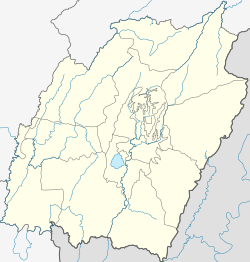Phulpui | |
|---|---|
Village | |
| Coordinates: 24°23′04″N93°05′06″E / 24.38436°N 93.08493°E | |
| Country | |
| State | Manipur |
| District | Pherzawl District |
| Population (2011) | |
• Total | 750 [1] |
| Languages | |
| • Official | Hmar |
| Time zone | UTC+5:30 (IST) |
| Vehicle registration | MN |
Phulpui is a Hmar village in Pherzawl district, Manipur, India. [2] The village stands near the Barak river. A government record puts them at 72 households and has over 390 active voters. Pastor Thangngur's Prayer Cave [3] is from this village.

